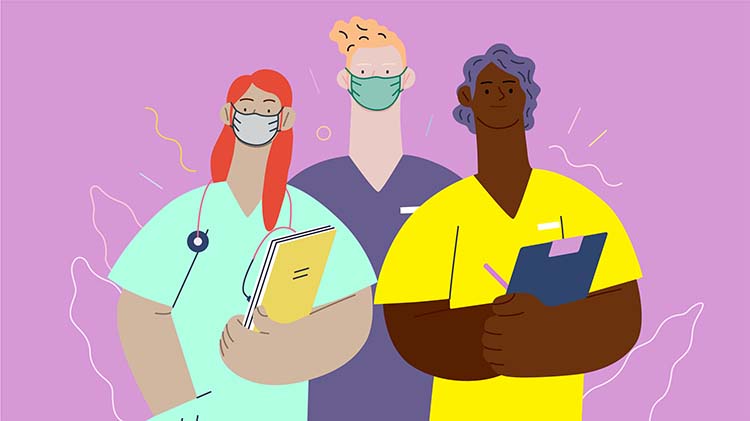A Simple Finger Injury?
01 Jun 2009
Case history
According to the patient, she had injured the tip of her left ring finger whilst playing basketball earlier that day. On examination, the patient’s left ring finger was painful and swollen and obviously dislocated. The GP was able to easily reduce the dislocation. An x-ray was not organised, as it was out of hours and the GP considered the patient’s finger to be in an excellent position. A buddy splint was applied to the finger and the patient was encouraged to return for review as required.
Approximately 3 weeks later, the patient re-presented to the General Practitioner. She had been coughing for a week and also had a sore throat. After examining the patient’s ears and throat and listening to her chest, the GP asked how her finger was. The patient said that her finger was much better, although she was still experiencing some mild discomfort.
No examination of the finger was performed. On 8 January 2007, the patient returned to the practice and saw a different General Practitioner. She complained of persistent swelling and an inability to fully flex her left ring finger. The patient was also concerned about her ability to return to competitive tennis. An x-ray of the patient’s left ring finger performed later that day was reported as showing a comminuted displaced fracture through the base of the distal phalanx.
The patient was referred to a Hand Surgeon on 9 January 2007. An open reduction and joint stabilisation of the patient’s left ring finger distal inter phalangeal (DIP) joint was performed on 10 January 2007. Unfortunately, however, after the K-wire was removed, subluxation occurred at the DIP joint. The patient was left without active flexion or extension of her left ring finger DIP joint.
Medico-legal Issues
In October 2007, the General Practitioner received a letter of demand from the patient. According to the patient, the management of her left ring finger injury
had been negligent, for the following reasons:
- The General Practitioner had failed to organise for an x-ray of the left ring finger to be performed on 25 November 2006.
- The General Practitioner had failed to provide appropriate follow-up instructions to the patient, in terms of arranging for an x-ray to be performed on the next business day. Further, the patient alleged that she should have been advised to seek further treatment if she experienced ongoing pain, discomfort or swelling of her finger.
- The General Practitioner had failed to appropriately examine the patient’s finger at the consultation conducted three weeks after the original injury, or to suggest that the patient should be further investigated by way of x-ray.
The patient sought reimbursement of her out-of-pocket medical expenses and lost income, payment for her planned further surgery (corrective osteotomy) and
compensation for the permanent loss of use of her left ring finger.
An expert Orthopaedic Surgeon instructed on behalf of the patient was critical of the General Practitioner’s management. According to the Orthopaedic Surgeon,
if an x-ray of the patient’s left ring finger had been performed on or around 25 November 2006, it is likely that the patient would have had a significantly better functional outcome.
The GP expert agreed that the General Practitioner should have arranged an x-ray either on 25 November 2006, or the following Monday. In the circumstances,
the claim was resolved on the basis that MDA National (on behalf of the General Practitioner) would reimburse the patient for past loss of income and medical expenses, in addition to the payment of a small amount representing the loss of use of the patient’s left ring finger. The claim was settled on the basis of a Deed of Release.
Discussion
The importance of appropriately investigating and providing appropriate follow-up instructions to patients suffering finger injuries is highlighted by this case. Although the patient’s outcome may not have been any different if an x-ray had been organised at the time of the patient’s initial presentation, the General Practitioner agreed that an x-ray should have been performed and an earlier diagnosis could have produced a better functional result.
As Murtagh states:
“The tendency to regard fractures of phalanges (especially middle and proximal phalanges) as minor injuries (with scant attention paid to management and
particularly to follow-up care) is worth highlighting. These fractures require as near perfect reduction as possible, careful splintage and, above all, early mobilisation once the fracture is stable – usually in 2 – 3 weeks.
Nevertheless, overzealous mobilisation can be as dangerous as prolonged immobilisation. Early operative intervention should be considered if the fracture is
unstable.”1
Common themes in claims involving an allegation of failure to diagnose fractures include:
- failure to order an x-ray when indicated;
- failure to order an x-ray of the appropriate area, e.g. performing an x-ray of the knee in a young child who is subsequently diagnosed with a slipped upper femoral epiphysis; and
- failure to follow up x-ray results, e.g. results filed before review by the ordering practitioner.
References
- Murtagh J General Practice 3rd edn. Sydney: McGraw Hill, 2003
Professional boundaries in healthcare - Part 1
Boundaries with patients present in numerous ways every day and all health practitioners
11 Aug 2025
Understanding Professional Medical Indemnity Insurance
Do you understand the ins and outs of professional medical indemnity insurance?
11 Aug 2025
Professional boundaries in healthcare - Part 2
Boundaries with patients present in numerous ways every day and all health practitioners
11 Aug 2025
Understanding changes to the Fair Work Act
What are the changes to the Fair Work Act and what is my role?
22 Jul 2025







